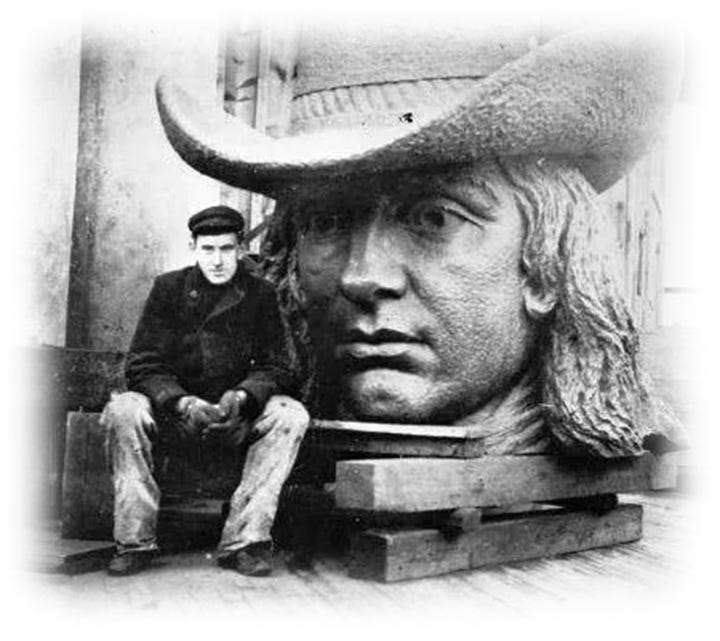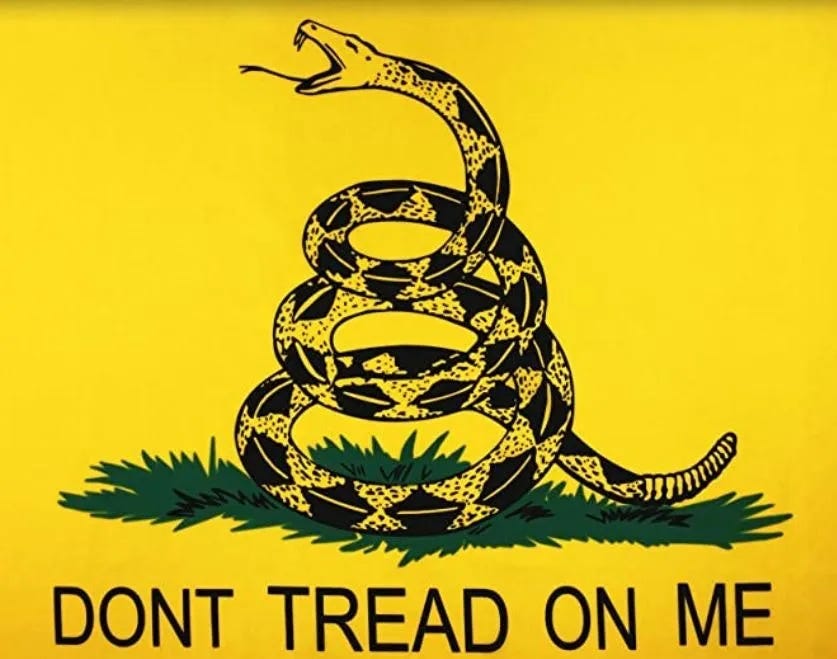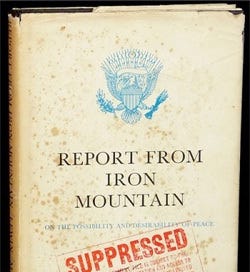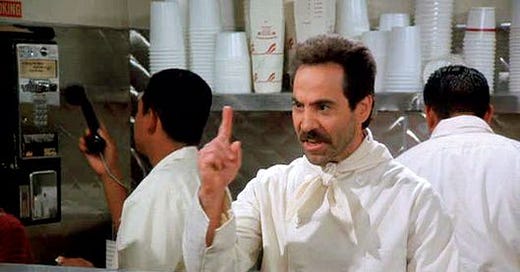

Discover more from Frederick R. Smith Speaks
William Penn Faced Cancelling
The story unfolds against the dynamic backdrop of seventeenth-century England. The emergence of diverse religious sects marked this time. Among these, the Quakers, known as Friends, stand out.
I expect to pass through this world but once. Any good therefore that I can do, or any kindness or abilities that I can show to any fellow creature, let me do it now. Let me not defer it or neglect it, for I shall not pass this way again.
William Penn
Words: 3,787 ~ Read time: 15 min
The startling revelation on January 5, 2024, regarding the Biden administration’s intention to dismantle a statue of William Penn struck me with profound dismay. Swiftly responding to this urgent matter, I have hastily compiled an essay addressing this pressing personal issue.
Foreword
This pressing entry adds to the ongoing series of historical essays woven with the rich tapestry of the personal journey taken to retrace the steps of our Founding. As a native of the birthplace of our nation, a distinctive identifier emerges when exploring sites from the colonial era—an echo that resonates as follows: “Here, Washington once rested.”
I was born in Philadelphia and spent my formative years in a suburb. That instilled in me a profound appreciation for the region’s history. During my youth, collaboration with my father on a project in Valley Forge left a lasting impact. As a subcontractor under a general contractor, he installed new outdoor lighting at Independence Hall Park in Philadelphia. Subsequently, I spent a significant portion of my adult life working in Philadelphia, with retirement in the surrounding area known as the Delaware Valley. This cumulative experience fueled a lifelong curiosity about the Founding of the United States, with a focus on key historical figures such as the eminent William Penn. The significance of Penn in my life becomes even more apparent for many reasons, as outlined throughout this easily. Mess with William Penn and look out.
Executive Summary
The story unfolds against the dynamic backdrop of seventeenth-century England. The emergence of diverse religious sects marked this time. Among these, the Quakers, known as Friends, stand out for their unique beliefs and practices. They received the term “Quakers” because their leader, George Fox, instructed a judge to “tremble and quake at the word of the Lord.” The story then introduces William Penn, a prominent Quaker figure. He envisioned a sanctuary for his persecuted community.
Penn seized a unique opportunity when King Charles II settled a debt by granting him land in the New World. That led to the establishment of Pennsylvania in 1681. Penn’s vision for Pennsylvania as a “holy experiment” emphasized people’s governance. It reflected his deep-seated belief in preventing the abuse of power. The Quaker-inspired constitution mandated the election of justices by the people. Penn’s interactions with indigenous people demonstrated his commitment to justice and peace.
The story explores the flourishing of Pennsylvania as a haven for the oppressed from Europe. It attracted settlers from diverse backgrounds. It also details Penn’s acquisition of Delaware and the separation of the two colonies in 1776. The text then transitions into a critical examination. It looks at the complex relationship between Quakers and slavery in the Delaware Valley. Despite some becoming slaveholders, Quakers played a pivotal role in ending slavery in the Delaware Valley. They turned it into a cradle of antislavery throughout the land. We then explore the internal divisions among Quakers on slavery. That showcases a diversity of opinions within the community, even as slavery remained profitable.
The account concludes with the Pennsylvania General Assembly’s 1712 attempt to impose a high tax on imported enslaved people. That illustrates the challenges and conflicts within the Quaker community. They grappled with the issue of slavery.
On January 5, 2024, the National Park Service proposed dismantling the statue of William Penn. Interior Secretary Deb Haaland led the effort. They erected the figure in 1982 to commemorate Pennsylvania’s Founding. Philadelphia situates the park near the Delaware River. The rehabilitation would feature an “expanded interpretation of Philadelphia’s Native American history.”
William Penn and the Quakers
The story begins with the tumultuous landscape of seventeenth-century England. A plethora of new religious sects sprouted. Each had its unique beliefs and practices. Among them was a group known as the Friends. Outsiders labeled them Quakers due to an incident involving their leader, George Fox (1624-1691). He had instructed a judge to “tremble and quake at the word of the Lord.”
The Quakers endeavored to live under their interpretation of the Bible. They had unconventional practices. For example, they refused to remove their hats before people of higher rank. They thought all individuals were equal in the eyes of God. The repercussions of this defiance were severe. George Fox recounted how he experienced imprisonment, punches, beatings, and bruises. Furthermore, the Quakers adopted the language of the Bible. They used “thee” and “thou” when addressing others. People of higher rank perceived the linguistic choice as disrespectful. Addressing the lower classes reserved this, fueling further animosity.
Penn, envisioning a sanctuary where Quakers could live in tranquility, seized a unique opportunity. King Charles II owed an enormous debt to Penn’s deceased father, Admiral Penn. In 1681, William Penn (1644–1718) convinced the king to settle the debt by granting him land in the New World, and they named it Pennsylvania, which signified “Penn’s woods.”
Like the Amish, Quakers oppose any war. Their interpretation of the Scriptures drove them. They believed a society built on justice and goodwill could eradicate the need for armed conflicts. William Penn was a young man from a distinguished English family. He became a member of this persecuted Quaker sect. Penn was a prominent figure among the Quakers.
Penn’s vision for Pennsylvania was nothing short of a “holy experiment” in government—a place where people could be secure from the abuse of power. He reflected his deep-seated belief in the necessity of people having a say in their governance in the constitution he drafted. Penn asserted, “The people must rule,” emphasizing a commitment to prevent any misuse of power by himself or his successors.
The Quaker-inspired constitution mandated the election of justices by the people. The ballot results elected assembly members who earned a modest daily wage of one shilling. This wage was a symbol of their service to the people. In September 1682, Penn set sail on the Welcome. He brought with him a hundred colonists to the Delaware River. There, he established the settlement of Philadelphia, meaning “brotherly love.”
Penn’s interactions with the indigenous people demonstrated his commitment to justice and peace. He paid them for the land and forged a treaty, emphasizing peaceful conflict resolution over war. The indigenous people pledged, “We will live in peace with William Penn and his children as long as the sun and the moon shall endure.”
Pennsylvania became a haven for the oppressed from Europe. It attracted settlers from Holland, France, Germany, and Wales. The colony flourished as people from diverse backgrounds coexisted peacefully.
Penn recognized the need for a seacoast. He acquired the region southeast of Pennsylvania, known as Delaware, from the Duke of York. That made him proprietor of both Delaware and Pennsylvania. In 1704, Delaware was granted its assembly and became a separate entity known as the “Three Lower Counties” or “Delaware Counties.” While it had a degree of autonomy, it was still under British rule. In 1776, the two colonies became separate entities.
Dutch settlements along the Hudson separated Pennsylvania from the New England colonies. It faced more challenges. In 1664, Colonel Richard Nicolls (1624–1672) commanded the English to displace the Dutch. They had controlled the Hudson Valley for forty years.
The fall of New Amsterdam marked the renaming of the colony to New York in honor of the Duke of York. Despite initial resistance led by Governor Peter Stuyvesant (1592-1672), the colonists were weary of a government in which they had no say. They embraced English rule, and New Netherland transitioned under English governance.
Once a part of New Netherland, New Jersey acquired its distinct identity under English rule. The Duke of York granted Sir George Carteret (1610-1680) and Lord John Berkeley (1560–1622) the land between the Hudson and Delaware rivers. In recognition of Carteret’s defense of the island of Jersey near England, they named the colony New Jersey. Situated across the Delaware River from Philadelphia, residents enjoy the area called “South Jersey.” This area is worthy of the state moniker “The Garden State.” Here, a personal connection with the Founding goes even deeper with my close friendship with a direct descendant of a Pennsylvania officer from the Revolutionary War, General Stephen Moylan (ca. 1737-1811).
The Quakers were not directly responsible for creating the Liberty Bell. But, their advocacy for justice and equality played a part in the bell’s symbolism. The Whitechapel Bell Foundry in London, England, cast the Liberty Bell in 1752. Pennsylvania State House (now Independence Hall) commissioned it in Philadelphia. It commemorates the 50th anniversary of William Penn’s 1701 Charter of Privileges. The Liberty Bell has an inscription from the Bible. It states, “Proclaim LIBERTY throughout all the Land unto all the Inhabitants thereof” (Leviticus 25:10). This symbolizes the struggle for freedom and equality.
Today, Friends Schools and Meeting houses dot the landscape in Delaware Valley, a testament to the resiliency of the Quakers. A close friend, a well-known Quaker, passed away 25 years ago. He had a striking similarity to William Penn. It was a privilege and honor to be at the “Meeting” where my buddy’s “Friends” shared their stories about the deceased Quaker. RIP, my good friend HTJ!
Slavery
This section explores the complex relationship between Quakers and the worldwide stain of slavery. It highlights the Quaker paradox in the Delaware Valley in the early years. Quakers advocated reciprocal liberty, while some engaged in the growth of African slavery. Pennsylvania Quakers faced a severe labor shortage. Within two years of settlement, they resorted to keeping enslaved people. The Bristol slave ship Isabella delivered 150 captives in 1684. Quakers purchased most, disrupting the colony’s finances.
Despite some becoming slaveholders like most societies worldwide, Quakers nevertheless played a pivotal role in its demise. The Delaware River united the region into a distinct cultural and economic province. Quakers founded, directed, and ultimately dismantled a unique slave regime. Many English Friends in the Delaware Valley initially became slaveholders. However, they remained conflicted about human bondage. Quakers and enslaved Africans acted as agents of change. They turned the peculiar institution of slavery into a cradle of antislavery thought.
History records the Quakers’ pioneering efforts in abolishing slavery. From 1684 to 1783, the Delaware Valley’s system of slavery became a significant center for antislavery thought. Quaker owners and enslaved Africans worked together to abolish it. Quakers became the first in America to abolish slavery within their society. They also took up related reforms, advocating for the rights of free people of color and women.
Still, slavery quickly became entrenched in the Quaker colonies. Even William Penn, the founder himself, became a slaveholder. Penn supported the acquisition of enslaved people because it meant lifelong ownership. He procured at least twelve Africans on his estate, establishing him as one of the slaveholders in the colony.
Historically, internal divisions among Quakers on slavery are evident. Some showed deep concern about the welfare of various marginalized groups. Others accepted and practiced but sought to end slavery. The Germantown Friends meeting in 1688 saw a historic rejection of slavery. They condemned the “traffick of mens-body” on the grounds of the Golden Rule. Other Quakers like Cadwalader Morgan (1655-1711) and Robert Pyle (1660-1730) struggled with their personal beliefs. They illustrated the diversity of opinions within the Quaker community.
Strident attacks from fellow Friends accused slaveholders. Despite the outcry about moral transgressions, slavery remained profitable in the Delaware Valley. That led to internal debates within the Quaker community. By 1700, even William Penn expressed concern about the growth of slavery—which initiated discussions within Quaker meetings. While Quakers urged caution and restraint, they did not, as a group, immediately require the prohibition of the slave trade. In 1712, the Pennsylvania General Assembly, which was majority Quaker, tried to impose a very high tax on imported enslaved people. Yet, imperial authorities in London intervened to keep the tax below that level.
Benjamin Lay (1681–1759), an 18th-century Quaker abolitionist, was a prominent Quaker in the antislavery movement. He spoke out against slavery and the mistreatment of enslaved individuals. Lay’s activism predated the more organized efforts of later abolitionists.
In the late 18th century, Quakers in the United States, particularly Pennsylvania, took a leading role. They established the first abolitionist societies. In 1775, a Quaker, Anthony Benezet (1713-1784), was instrumental in forming the world’s first abolitionist societies. In 1770, he convinced Quakers to build the first free day school for African Americans.
Quakers continued to be influential in the abolitionist movement throughout the 19th century. Lucretia Mott (1793-1880) and Levi Coffin (1798-1877) were notable Quaker abolitionists. They played vital roles in the Underground Railroad. It was a network of secret routes and safe houses. The Railroad helped enslaved individuals escape to freedom.
The Attempted Cancelling of Penn
On January 5, 2024, the National Park Service, led by Interior Secretary Deb Haaland, announced a preliminary proposal to revise Welcome Park in Philadelphia. That sleight of hand included a provision to dismantle the statue of William Penn. The Park Service placed the figure in the park to commemorate the 300th anniversary of Pennsylvania’s founding in 1982. Philadelphia is the location of this historical park, situated near the Delaware River at Sansom and Second Streets. They built it on the site of Penn’s original home.
The proposed rehabilitation plan includes an “expanded interpretation of Philadelphia’s Native American history.” Representatives from various indigenous nations participated in consultations. That consists of the Haudenosaunee, the Delaware Nation, the Delaware Tribe of Indians, the Shawnee Tribe, and the Eastern Shawnee Tribe of Oklahoma. But, maybe it is not their fault. Perhaps the excellent history books in their local library outlining Penn’s good relations with the Indians got canceled by the ALA.
The Park Service proposal claims to preserve most of the park’s original design. Yet, they plan to remove Penn’s statue and the model of his original home. There are no plans for reinstallation. The National Park Service plans to introduce a new exhibit at an unspecified future date. The display would “mention Penn.”
National Park Service Director Charles Sams III shares Native American ancestry with Secretary Haaland. He directs this agency. It oversees a significant part of Philadelphia’s historic sites. The area covers about 54 acres in the Old City neighborhood. The sites include Independence Hall, the Liberty Bell, Congress Hall, and other crucial places. This is the cradle of America’s Founding. They planned to keep the park’s name “Welcome” after William Penn’s ship that brought him from England in 1682.
The proposal to remove William Penn from Welcome Park initiated more debates about removing statues of America’s founding fathers. It also sparked debates around historical references related to America’s founding fathers. The Pavlovian-like focus is on the slaveholding past. And these people complain others are “one-issue voters.”
On January 8, 2024, the government retracted its proposal to dismantle the William Penn statue. Kudos goes to Pennsylvania Democratic Gov. Josh Shapiro. He took credit for the park service’s reversal, saying, “My team has been in contact with the Biden Administration throughout the day to correct this decision.”
Yet, concerns persist about the long-lasting impact of such controversies. There is the likelihood of a rebound for similar projects emerging from the minds of the uneducated. Possessing a comprehensive understanding of our historical context renders it challenging for me to empathize with the use of the Marxist term “Colonizer” as a pejorative. I encourage a more constructive engagement and urge individuals to broaden their perspectives.
During the George Floyd riots of 2020, William Penn’s legacy faced scrutiny from the cancel culture. Local National Public Radio affiliate WHYY delved into his history as an enslaver. Progressive-public WHYY reported what we know: Penn “enslaved roughly 12 people.” But, of course, such pigeonhole reporting intentionally drops the rest of the story. But there are more important stories than the good relations between Penn and the Indians. Leave it to the progressives at WHYY to publish this juvenile-like story: Unpacking the phallic fallacy atop Philadelphia City Hall.
Collectivists love to use the history of slaveholding to usher in their socialist utopia. In particular, these people love to use their version of history to dismantle the statues of America’s founding fathers. They have also used it to erase their names. Historical sites, city centers, museums, cemeteries, and other places have also fallen. They bend their knees to the god of political correctness. Advocates for purifying our public historical records argue that we should cancel history. They show hatred toward historical figures who seem to have broken modern progressive values. We face canceling should we celebrate their names or good deeds.
A Statue Comes Full Circle
The statue of William Penn atop Philadelphia’s City Hall is a significant and iconic symbol in the city’s history. People call the figure “Billy Penn,” which has a fascinating history.
The idea of placing a statue of William Penn on top of City Hall dates back to the late 19th century. Architect John McArthur Jr. (1823-1890) designed City Hall and its construction began in 1871. The original plan did not include a statue. They later decided to crown the city’s new municipal building. They wanted to pay a fitting tribute to the founder of Pennsylvania, William Penn.
The choice of William Penn was a nod to the city’s Quaker heritage. It also honored the founder’s role in establishing religious tolerance and democratic principles. The commissioning committee hired sculptor Alexander Milne Calder (1846-1923) to create the statue. A tower would support a bronze statue on top. My wife’s great, great, great, grandfather worked alongside Calder. His assigned duty was to cast the hat of the statue. His work partner Frederick Ullberg also worked under Calder at the Tacony Iron Works (1881-1910) in the Tacony section of the city on the wast bank of the Delaware River. Coincidently, as a teen, I spent many days foraging along the banks of Tacony Creek. That creek empties into the Delaware River near the Tacony Iron Works site.1

Calder completed the casting of William Penn in 1892. It is an impressive artwork hoisted on top of City Hall in 1894. In the depiction, a 37-foot-tall William Penn holds a charter in his right hand and a key in his left, symbolizing the key to the city. It was the tallest statue atop any building in the world for a brief period. At 27 tons, it is the most enormous bronze statue in the world on top of a building.
The statue was the highest point in Philadelphia until 1987. That year, the construction of One Liberty Place violated the city’s “gentlemen’s agreement.” It surpassed the height of the statue. This event marked a significant change in the city’s skyline and sparked debate about the impact on tradition.
In 2007, Comcast Center surpassed One Liberty Place, becoming the tallest building in Philadelphia. But, as a symbolic gesture, the construction team placed a small statue of William Penn on the top of Comcast Center. That adhered to tradition and ended the “Curse of Billy Penn.” Many believed this curse brought lousy luck to Philadelphia sports teams.
The statue of William Penn remains a cherished and recognizable symbol of Philadelphia. It represents the city’s history, heritage, and religious freedom.
Conclusion
The history of William Penn unfolds against the backdrop of seventeenth-century England. Various religious sects rose during this period. The Quakers, or Friends, stood out. Penn’s journey reflects a commitment to justice and peace and a unique experiment in governance. He transformed from a persecuted Quaker into Pennsylvania’s founder.
The founders envisioned Pennsylvania as a haven for diverse settlers. It flourished under Penn’s influence, emphasizing equality and participatory governance. Yet, the narrative takes a complex turn. The Quakers advocate liberty. Some also engaged in African slavery and grappled with this contradiction. The Quaker paradox in the Delaware Valley unfolds. It reveals conflicting values and pivotal roles in the abolition of slavery.
In early 2024, there was an attempt to cancel William Penn by proposing to remove his statue. That reflects contemporary challenges in reconciling historical figures’ complex legacies. Scrutiny of Penn’s slaveholding past intensifies the debate. It resonates with broader discussions about statues and historical references in public spaces.
The government’s eventual withdrawal of the proposal raises questions. Excessive insistence on substituting genuine historical accounts with symbolic tributes to “oppressed peoples” has evolved into a collectivist contagion. This trend reflects a Maoist initiative beyond learning from history and seeks to obliterate it.
In this nihilistic behavior, no memorial is secure. Even those dedicated to the most commendable individuals or causes face the Caustic Cancel Culture Pogrom. Consequently, advocates of this Pavlovian-like movement promote the notion that most deceased white males are inherently malevolent. As such, the removal of statues is fair game for our gutless leaders. Targets include Abraham Lincoln (1809-1865) the Great Emancipator, and Benjamin Franklin (1706-1790), a key figure in a society devoted to the abolition of slavery. 📕
Sources
African Founders; How Enslaved People Expaned American Ideals ~ David Hackett Fischer ~ 941 pages, Simon & Schuster (publisher), May 2022
America Land of Freedom ~ Gertrude Hartman ~ 720 pages, D.C. Heath and Company (publisher), January 1952
Society of Freinds ~ Britannica
Quakers in The World - quakersintheworld.org
Brief History of William Penn ~ USHistory.org
The Tacony Iron & Metal Company/ Dodge Steel Company ~ Historical Society of Tacony
Biden administration to tear down William Penn statue, make historic park more ‘welcoming’ and ‘inclusive ~ Blaze media
Park Service retracts decision to take down William Penn statue at Philadelphia historical site ~ Associated Press
BREAKING UPDATE: Biden admin retracts plan to remove statue of William Penn from Philadelphia park and ‘rehabilitate’ the park to commemorate Native Americans ~ The Post Millennia
Recommended Related Reading by Fred Smith
I warmly encourage you to consider becoming a paid subscriber if you have the means. Regardless of your choice, your support is deeply appreciated. From the bottom of my heart, thank you for your invaluable support!
In 1919, Kern Dodge founded Dodge Steel and moved the firm onto the grounds of the Tacony Iron Works. The company’s ultimate downfall can be attributed to the civil rights and labor conflicts in the 1960s and 1970s and the widespread corporate merger frenzy that characterized the 1980s. In another coincidence, my father, an electrical business owner, had contracts with Dodge Steel in the 1970s.























Wel, well, well.. The tribes wanted to promote their history. Removing William Penn's statue wasn't a priority https://apnews.com/article/william-penn-statue-native-american-philadelphia-fd36a446127f987c3935931f94ecd477
Thank you for this enlightening essay.
Don’t know much about the Quakers but that Richard Nixon was a Quaker, aside from being one of the the top legal scholars of the U S Constitution.
There’s a little town named Friendswood between Houston and Galveston and I believe the original founders of that community were Quakers. My cousin lives there, and the Quakers there bake fresh bread from whole wheat they grind. They also are experts at “putting food by” and building up stores of food for preparedness and survival.
I always liked the little joke…
“The Quaker said to his wife, Everyone in the world art peculiar except thou and me, and thou art a little peculiar.”
I heard that the reason they are called Quakers is that they shake and quake during their religious services. I know better now.
I picked up a clue as to the origin in Africa of the slave trade to the colonies. It was a movie titled, as I recall, Anthony Adverse. There was a scene in the movie where a character wearing a turban was selling his captives to a slave trader to be put on to the boats to travel, I guess on up the Atlantic up to the Bahamas. But that is not the whole story of the profiteers from the African slave trade.
________________
(The bible, old and new testaments, has many passages about slavery and bondslaves. Christians are to be bondslaves to Christ.)
Saint Paul’s epistle to the Ephesians.
Ephesians 6:5-9
Douay-Rheims bible
https://biblehub.com/drbc/ephesians/6.htm
Slaves and Masters
Servants, be obedient to them that are your lords according to the flesh, with fear and trembling, in the simplicity of your heart, as to Christ. 6Not serving to the eye, as it were pleasing men: but, as the servants of Christ, doing the will of God from the heart. With a good will serving, as to the Lord, and not to men. Knowing that whatsoever good thing any man shall do, the same shall he receive from the Lord, whether he be bond or free.
And you, masters, do the same things to them, forbearing threatenings: knowing that the Lord both of them and you is in heaven. And there is no respect of persons with him.